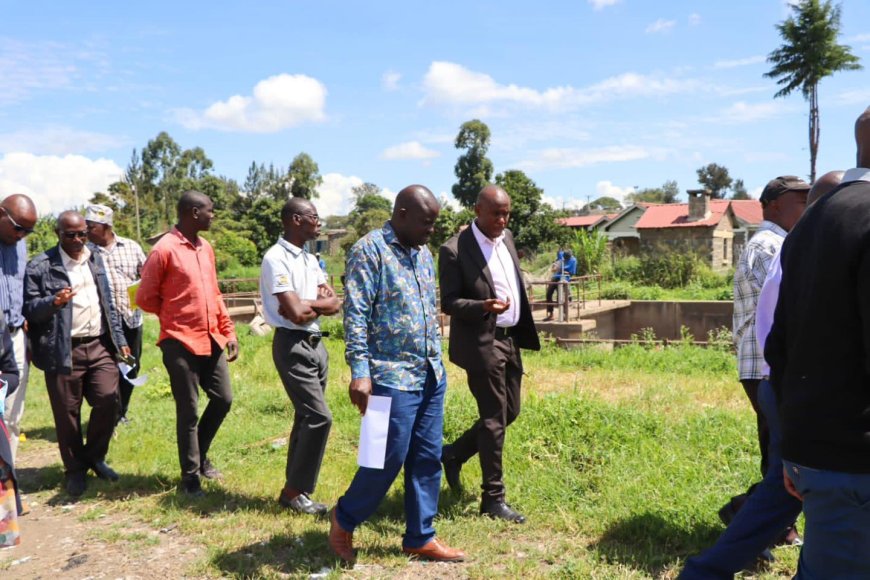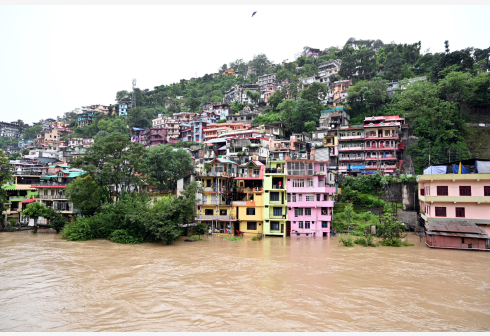Reduction of sludge to Lake Nakuru

Nakuru, Wednesday, May 24, 2023
KNA by Veronica Bosibori
Nakuru County government has embarked on a project to remove industrial and domestic effluent that is occasioned by stormwater into Lake Nakuru National Park that has significantly eroded its flora and fauna.
The Chief Officer for Environment Mr. Kennedy Barasa today commissioned the completed channels and retention ponds at the Kivumbini ward that will ensure more solid materials settle into the ground rather than landing in the lake.
He acknowledged that the treatment of effluent was vital before its discharges into the lake, rivers, and streams to prevent damage to the environment, animals, and human health. He added that it was the responsibility of manufacturers to treat their effluent correctly.
Speaking at the site, the Chief Officer called on the manufacturers and the community to adopt proper waste management and disposal methods so as to protect the environment and the lake.
He noted that proper garbage handling would easily be achieved at the Community level by minimizing single-use plastic and more use of glass and other eco-friendly containers to combat plastic pollution that clogs the sewerage system.
The park warden Titus Mitau has often raised the red flag over the discharge of effluent into the Lake Nakuru National Park that has continually threatened the ecosystem.
Last year, the Kenya Wildlife Service (KWS) research scientists said approximately 540kg of solid waste is collected at the park on a daily basis, and it increases significantly during the heavy rain season.
The researchers explained that the stormwater mixes with industrial effluent and it endangers the wild animals because they ended up feeding on contaminated plants.
However, the chief officer said the constructed channels and retention ponds would prevent all solid materials from landing in the lake.
Industrial waste, he explained, contains heavy metals and molasses that float on the water surface and block sunlight penetration, which is essential for photosynthesis to take place in plants. He added that the waste further prevents the production of nutrients and the growth of algae for flamingoes.
The Lake Nakuru National Park was the first site in Kenya to become protected under the RAMSAR Convention. The lake has been named and protected over the years by a variety of conservation acts. It was named a bird sanctuary in 1960, a national park in 1969, a Rhino Sanctuary in 1978, and a world–class national park in 2005.
The lake is famous for its flocks of flamingoes, which literally turn the shores pink. The elegant birds are the main attraction for tourists visiting the game park.
But this site, which provides tourists and Nakuru County’s best-known images, has faced a myriad of environmental issues, including climate change that has led to seismic flooding.
Courtesy ; K. N. A
What's Your Reaction?



































































































































































































































































































